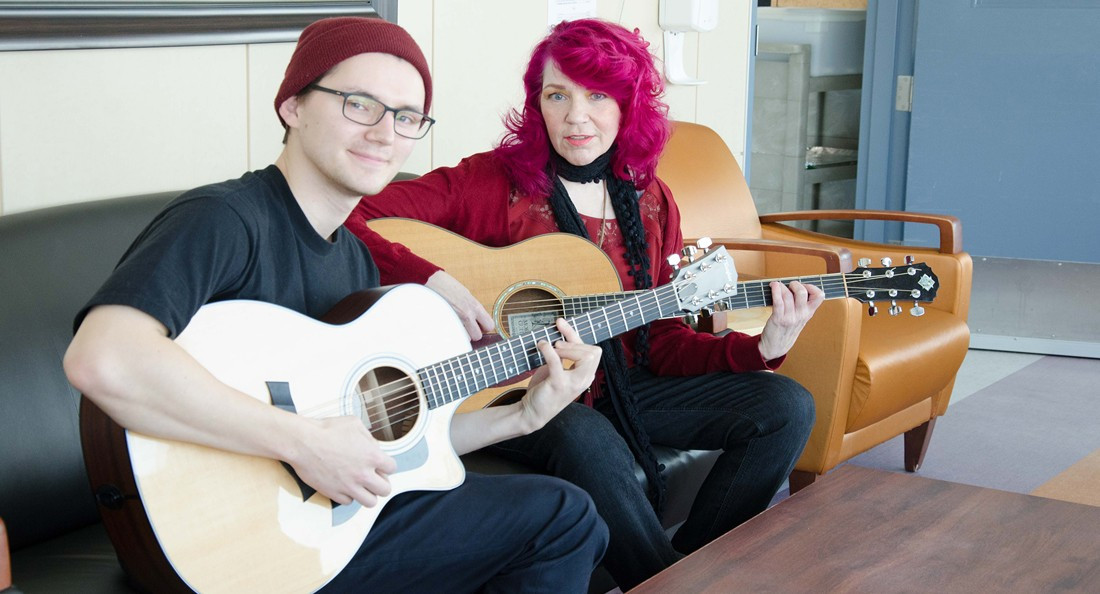Bringing harmony to the hospital
The hospital isn’t the first place one might expect to hear an orchestral performance.
With Artists in Healthcare Manitoba (AIHM) and the Manitoba Chamber Orchestra (MCO)’s recent collaboration, a string quartet might be coming to a waiting room near you. The program aims to integrate music with healing by bringing the joy of song into clinical environments for patients, residents and staff alike.
Thanks to a grant from the Winnipeg Foundation, 200 musicians will be dispersed across 17 provincial healthcare locations, ranging from long-term care facilities to mental health treatment centres.
From guitar trios that belt out ’60s pop hits to violin/cello duos playing Baroque melodies, the program offers a diverse selection of ensembles to appeal to every taste. In accordance with traditional Indigenous values of healing through music, particular emphasis is being placed on bringing Indigenous music to the Selkirk Mental Health Centre.
Shirley Grierson, AIHM’s executive director, witnessed the benefits of music performance in a clinical setting firsthand. Since 2004, the organization has seen success within their Music to My Ears program, a travelling minstrel music project at St. Boniface hospital and Grace hospital.
“Bringing live music into these settings humanizes the hospital,” Grierson says. “It has a very calming effect.”
On a Friday afternoon, a St. Boniface hospital waiting room is turned into an impromptu performance venue. Music to My Ears musicians Lois Gillespie and Alex Delargo play Elvis and Chet Baker covers on their guitars, while patients are serenaded by soft string melodies.
On any given day of the week, live music may be present anywhere from a private room in the palliative care ward to the intensive care unit. Complete with an art gallery open free to the public, the hospital has set an example to other healthcare centres on the benefits of interlacing the arts with healing.
In between songs, a patient and Delargo talk about gear. Someone else requests a tune. In no time at all, half of the waiting room begins conversing with one another.
Beyond a mode of entertainment or a mere distraction tactic, music connects those in waiting and watching through a shared experience.
“A lot of it is hearing people’s stories,” Gillespie says. “A lot of times, people don’t want to talk, so you’ll play some songs, and they’ll say, ‘Oh, I remember that song!’ and you’ll talk about that.”
From a scientific perspective, live music performance offers numerous medical benefits. The power music has to distract patients from health-related stressors can lower heart rates, blood pressure and cortisol levels, and in turn promote overall well-being. In times of distress, music can offer the comfort of nostalgia or a temporary refuge from difficult circumstances.
Very few environments host a spectrum of emotions as wide as in a hospital. Hospitals represent the forefronts of life, and many will take their first and last breaths in these facilities.
For Delargo, playing in the palliative care unit at St. Boniface Hospital has allowed him to experience a level of human intimacy on a daily basis that many seldom get the chance to experience.
“You get life lessons from this work,” Delargo says. “You see right away what’s important.”
Published in Volume 73, Number 20 of The Uniter (March 7, 2019)







